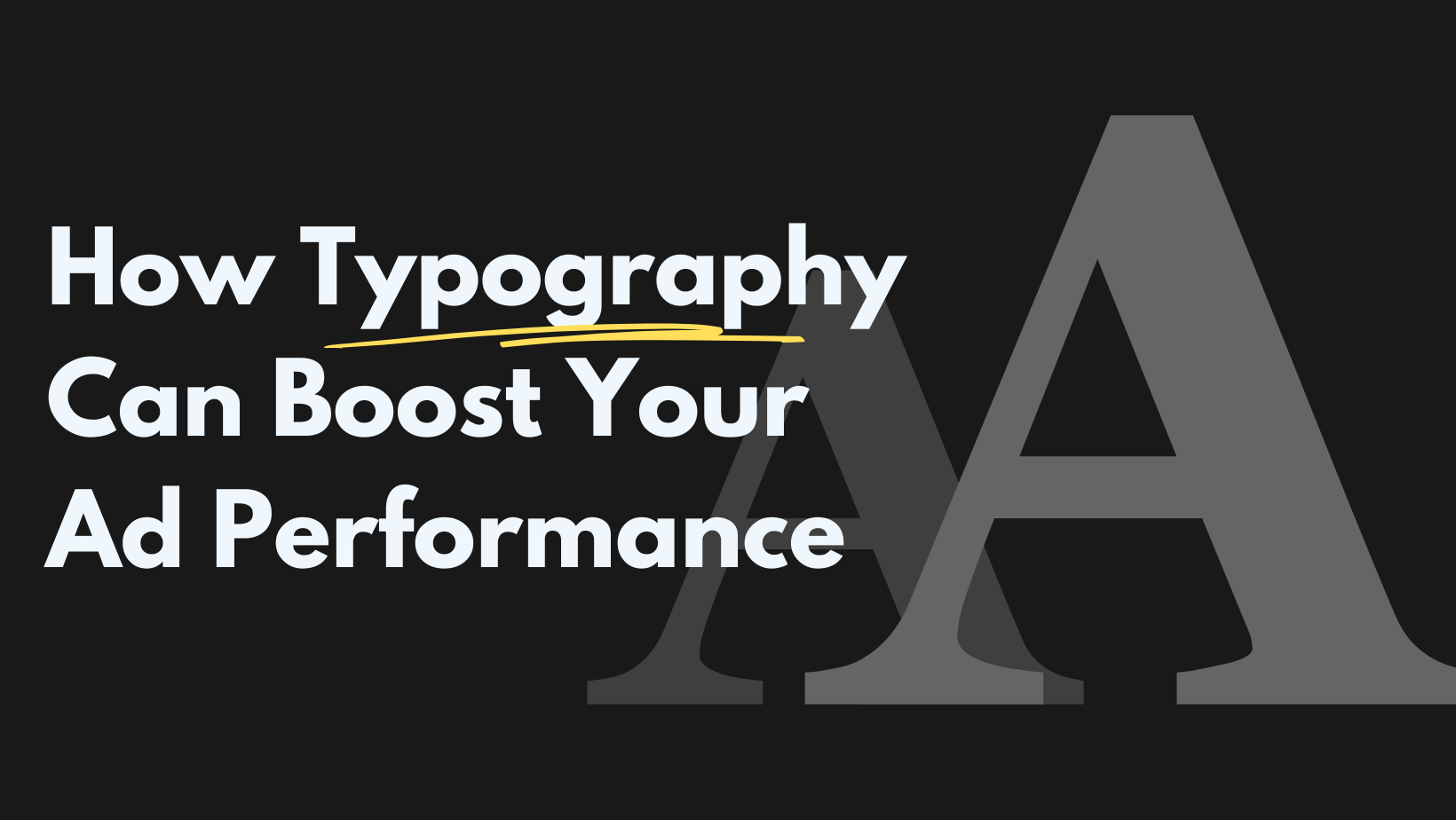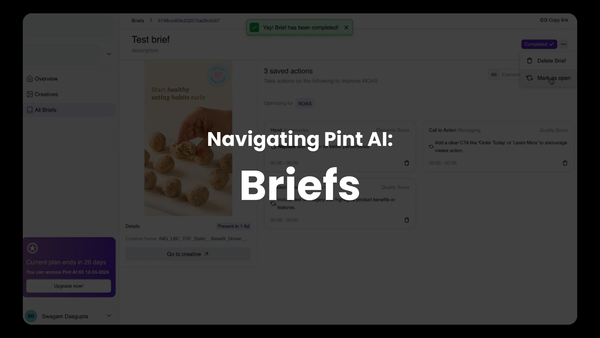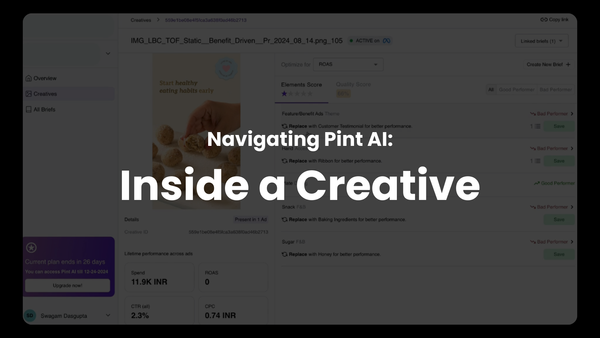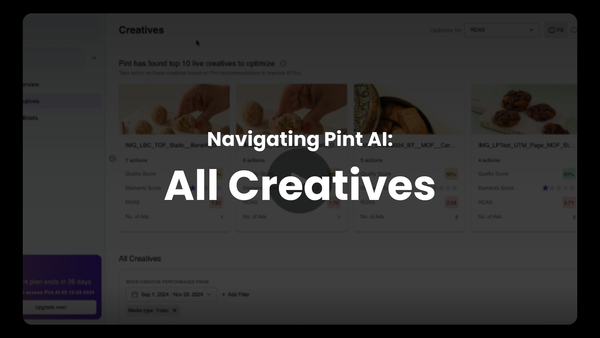Creative Analytics 103: The Impact of Typography on Ad Creative Performance
Typography can have a marked measure on the quality and performance of ads. It's important to know the best ways to use typography.

Typography is a critical element in ad creatives, influencing readability, emotional response, brand perception, and overall engagement. The choice of fonts, sizes, colors, and spacing can significantly affect how an ad is perceived and how effectively it communicates its message. In this blog post, we’ll explore how typography impacts ad performance and provide best practices for optimizing typography in your digital ads.
1. Readability and Clarity
Importance of Legibility:
Typography directly affects the readability of an ad. Legible text ensures that the message is easily understood, reducing cognitive load on the viewer. Fonts that are difficult to read can frustrate viewers and lead to disengagement.
Best Practices:
- Font Choice: Use clean, sans-serif fonts for digital ads, as they are generally more readable on screens.
- Font Size: Ensure the text size is large enough to be read comfortably on all devices, especially smaller screens like smartphones.
- Line Spacing: Adequate line spacing improves readability by preventing text from appearing cramped.
Example:
Google’s ads often use clear, legible fonts with appropriate spacing, ensuring that their messages are easily read across various devices.
2. Emotional Response
Conveying Mood and Tone:
Typography can evoke specific emotions and set the tone of an ad. Different fonts carry different connotations. For example, serif fonts can convey tradition and reliability, while sans-serif fonts often appear modern and straightforward.
Psychological Impact:
Fonts can influence how viewers feel about the content. Script fonts may feel elegant and personal, while bold fonts can convey strength and urgency.
Example:
Luxury brands like Tiffany & Co. use elegant serif fonts to convey sophistication and exclusivity, enhancing their brand image.
3. Brand Perception
Consistency in Branding:
Consistent use of typography helps reinforce brand identity. Using the same fonts across all marketing materials builds recognition and trust.
Typography as a Brand Element:
Unique typography can become a distinctive element of a brand’s identity. Custom fonts or consistent font styles help brands stand out and be easily recognized.
Example:
Coca-Cola’s distinctive script font is instantly recognizable and has become a central element of its brand identity.
4. Engagement and Conversion
Drawing Attention:
Bold and contrasting typography can draw attention to key messages or calls to action (CTAs). Effective use of typography can highlight important information, guiding viewers towards desired actions.
Encouraging Interaction:
Readable and well-designed typography encourages viewers to engage with the content. Clear CTAs, emphasized through typography, can increase click-through rates and conversions.
Example:
Amazon’s ads often use bold, clear typography for CTAs like “Shop Now” or “Learn More,” effectively driving viewer engagement and conversions.
5. Visual Hierarchy
Guiding the Viewer:
Typography is crucial in establishing a visual hierarchy, helping to guide viewers through the ad. By varying font sizes, weights, and styles, designers can create a clear path for the viewer’s eye to follow.
Emphasizing Key Points:
Larger, bolder fonts can be used for headlines and key messages, while smaller fonts can provide supporting information. This helps ensure that the most important information is noticed first.
Example:
Apple’s ads often use a strong visual hierarchy, with large, bold headlines and smaller supporting text, ensuring the main message is conveyed effectively.
Best Practices for Effective Typography in Ads
- Choose Readable Fonts:
Select fonts that are easy to read across different devices and screen sizes. Avoid overly decorative fonts that may be difficult to read. - Maintain Consistency:
Use the same fonts consistently across all ads to reinforce brand identity and recognition. - Use Appropriate Sizes:
Ensure font sizes are large enough for easy reading, especially on mobile devices. Important information should be emphasized with larger font sizes. - Create Contrast:
Use contrasting colors for text and background to improve readability. High contrast ensures that text stands out and is easily readable. - Establish Visual Hierarchy:
Vary font sizes, weights, and styles to create a clear visual hierarchy. Guide the viewer’s eye through the ad, emphasizing key messages and CTAs. - Test and Optimize:
Conduct A/B testing with different typography options to determine what works best for your audience. Use analytics to track performance and make data-driven adjustments.
Conclusion
Typography plays a vital role in the performance of ad creatives. By ensuring readability, evoking the right emotions, maintaining brand consistency, enhancing engagement, and establishing a clear visual hierarchy, effective typography can significantly improve the impact of digital ads. Implementing best practices in typography will help create ads that communicate messages clearly, resonate with viewers, and drive better results.
By understanding the importance of typography and optimizing its use, brands can enhance the overall effectiveness of their digital advertising efforts and achieve better outcomes.





